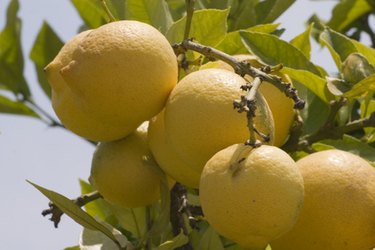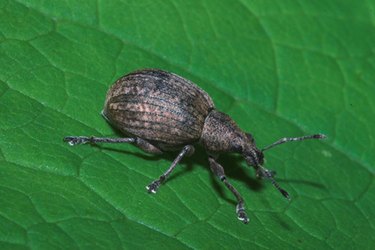
All citrus trees are susceptible to a variety of diseases (including hundreds of types of bacteria, fungi and viruses), which can be spread from species to species and can damage or destroy both fruit and trees. The fungi that attack lemon trees can be prevented and, if it does occur, can be dealt with using simple treatments.
Types of Citrus Fungus
Video of the Day
Lemon trees suffer from two types of fungus: fungal spores, which live in and emanate from the ground and attack the tree's roots; and airborne spores, which attack the tree's fruit, bark and leaves.
Video of the Day
Citrus fungi include melanose, citrus scab, brown rot (also known as root rot), sooty mold (brought to the tree via insects) and greasy spot, the most common form of citrus fungus.
Symptoms & Causes

Fungi in lemon trees can cause lesions and spots on leaves and cankers on bark, as well as scabs and lesions on the fruit. Fungi can also cause a lemon tree's leaves to fall early.
Fungi attach themselves to trees via a number of means, including insect secretions, rain and watering (by spreading fungal spores throughout the tree and helping them adhere to the bark, branches and leaves). Fungi thrive in warm, damp conditions. Decomposing leaves on the ground at the base of the tree provide a perfect environment for fungi to grow and transfer to the tree.
Treatment
Lemon tree fungi can be easily combated with prevention and treatment. Keep fallen leaves from accumulating and decomposing at the base of the tree. Provide adequate soil drainage for the tree. Prune dead and infected branches, which can transfer spores to healthy areas of the tree during rains and waterings. Remove low-hanging, healthy branches to which spores from the ground can more easily attach.
If symptoms appear, use a fungicide to treat the problem. Most recommended treatments contain liquid copper. A second application may be needed after the first round of spraying. Treating the tree with an insecticide will address the fungi attached to the tree by pests.